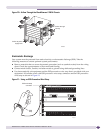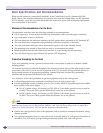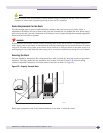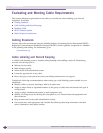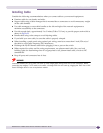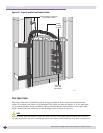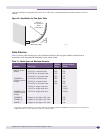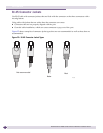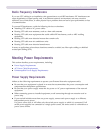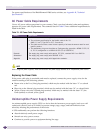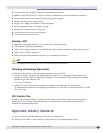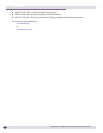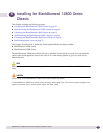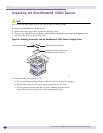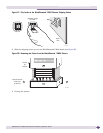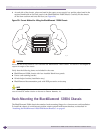
Meeting Power Requirements
BlackDiamond 12800 Series Switches Hardware Installation Guide
53
Radio Frequency Interference
If you use UTP cabling in an installation, take precautions to avoid RF interference. RF interference can
cause degradation of signal quality, and, in an Ethernet network environment, can cause excessive
collisions, loss of link status, or other physical layer problems that can lead to poor performance or loss
of communication.
To prevent RF interference, avoid the following devices or situations:
● Attaching UTP cable to AC power cables
● Routing UTP cable near antennas, such as a ham radio antenna
● Routing UTP cable near equipment that could exhibit RF interference, such as ARC welding
equipment
● Routing UTP cable near electrical motors that contain coils
● Routing UTP cable near air conditioner units
● Routing UTP cable near electrical transformers
In areas or applications where these situations cannot be avoided, use fiber optic cabling or shielded
twisted pair cabling (STP).
Meeting Power Requirements
This section describes power requirements, including:
● Power Supply Requirements
● AC Power Cable Requirements
● Uninterruptible Power Supply Requirements
Power Supply Requirements
Adhere to the following requirements to operate your Extreme Networks equipment safely:
● Be sure that your equipment is placed in an area that accommodates the power consumption and
component heat dissipation specifications.
● Be sure that your power supply meets the site power or AC power requirements of the network
equipment.
● When connecting power to installed equipment, avoid connecting through an extension cord or
power strip.
● If your switch includes more than one power supply, connect each power supply to a different,
independent power source.
If a power source fails, it will affect only the switch power supply to which it is connected. If all
switch power supplies are connected to a single power source, the entire switch is vulnerable to a
power source failure.



